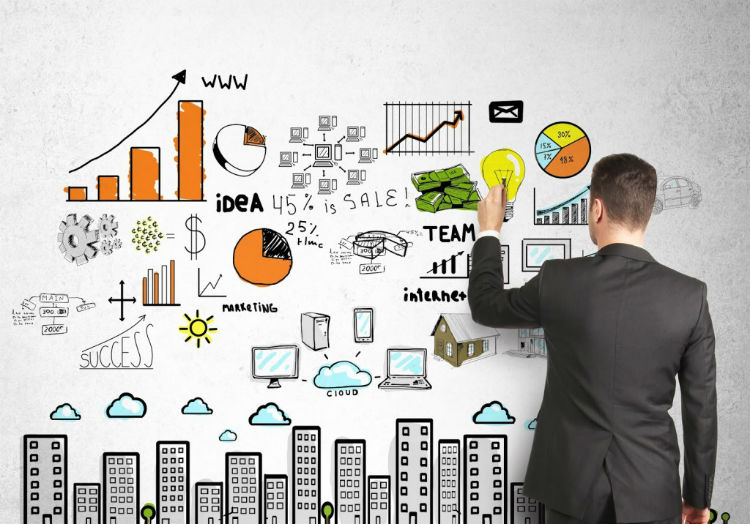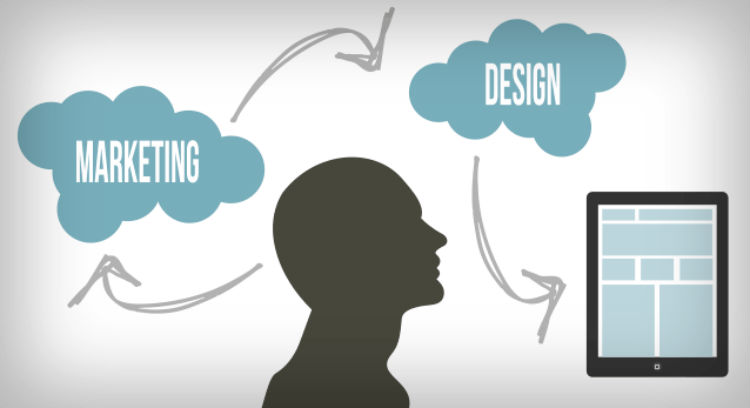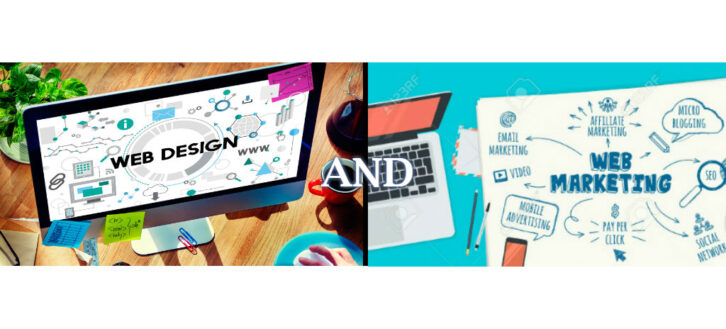Do you need a designer on staff or can you do with the services of external specialized companies or freelancers? Can a designer help the marketing department with anything? The answers to these and some other questions I will try to describe in this article.
There is no doubt that original design is an integral part of marketing in any company. The development and coordination of the design of any pos-materials, logo, hall design is the direct fiefdom of the marketing department. Naturally, there is no need for a designer. In general, the role of the designer in any company is huge. Let’s look at the market leaders, the key element of their success is an excellent design. Also, the design is the basis of any brand.

Basically, it is clear that any advertising company, logo or brandbook creation can not do without designers. For example, you need to draw signs for the seasonal sale, or prepare a banner for the billboard, or maybe take a creative leaflet. Who can do this – only designers. After all, designers are almost the only caste of specialists capable of creating graphic masterpieces. Of course, you can study not very complex programs like Photoshop or CorelDraw, as well as a couple more programs or free mockups, the way of layout and many nuances. You can study this and any marketer, I think, is able to cope with it. Although why there are designers.
Do I need a designer on the staff of the marketing department?

The answer to this question depends on some factors:
First, how often your company needs the help of a designer. If you once a year carry out any marketing campaign that requires printing a leaflet or poster, in this case, your own designer in principle and not needed. The one-time services of a third-party designer will cost much cheaper. However, if in a constant mode you need to develop a new design, various booklets, leaflets, banners and navigation, as well as many other interesting things, in this case, a full-time designer who understands the specifics of your business you just need. Payment for the development of design layouts will cost much more than the monthly salary of a specialist, with the employee can be entrusted with several different responsibilities, not related to design, but very useful for marketing.
Secondly, there is a huge dependence on the approval process and how often the mood of the manager changes. Independent designers provide, as a rule, a limited number of options and make a maximum couple of adjustments to the adopted layout. In the future, if you decide to change something, then for an appropriate fee. Sometimes it happens that the approval process takes several weeks or even months of heated discussion and making new corrections. As a result, the original layout can be changed beyond recognition. And the changing mood of the manager in general is an unpredictable thing. This arrangement, just obliges you to keep the designer on the staff of the marketing department.
Third, why the designer is desirable in the state of the marketing department. Marketers as well as designers are creative people – ideas arise unexpectedly and often. And the presence of the designer, who is always around, just very convenient. And it is easier for the designer to understand what these marketers want from him.
Can a designer help marketers?

Absolutely. A designer with a long experience in one company develops a certain understanding of what a picture should look like. Based on the request, a qualified designer who knows his business can immediately say what is appropriate and what is not. When the designer “at hand”, you can not waste a lot of time to understand whether the proposed idea of the marketer or it immediately cut off and think in another direction.
As it seems to me, the designer is just an invaluable employee of the marketing department. Although the price is still there, it is a monthly salary. But it’s hard to estimate the help you can get.
Design is the most obvious element of most products, because:
- they can have a certain shape (product design); Lion cookies in the shape of a paw – a great example of product design, white chocolate can have the shape of a glass of milk, etc.;
- they are pre-packaged (packaging design); the design is, if I may say so, the “exterior” of most products;
- they need to be advertised, thus making them known (communication and graphic design); nowadays, information is distributed through high-tech media, often excluding sensual communication;
- they must be produced at the lowest cost and as secure and registered as possible (production design);
- they must satisfy the consumer aesthetically (aesthetic design);
- they must be increasingly offered outside stores and supermarkets, in outdoor advertising locations (architectural and interior design);
- freight transport, buses, etc., constantly in motion, is an interesting and valuable means of communication (transport design);
- they should render on the buyer long-term influence, and it provides a combination of a product, packing and communication; here it is possible to speak about emotional design as completeness of impressions causes in the buyer loyalty to a product;
- they are not alone, but surrounded by competing products, which means that the more the buyer knows about a particular product, the more likely it is that we have strengthened the ties between the buyer and the manufacturer.
In the latter case, we can talk about websites, customer service, etc. Usually, the back panels of the package are fatally boring to read. It is important to choose combinations of words and symbols. The true meaning of information design is to replace words with symbols or illustrations.

A successful design may be quite enough for success, but it is even better if it is combined with successful management. For example, Swatch and Nespresso owe success not only to their names, design, brochures, advertising and packaging. The success of these companies is an integral whole, created by design thinking in all spheres. Successful companies, such as Apple, P&G, Bang & Olufsen, follow a certain method of design management, spreading design throughout the organization, not only in the process of product promotion or packaging design development.


